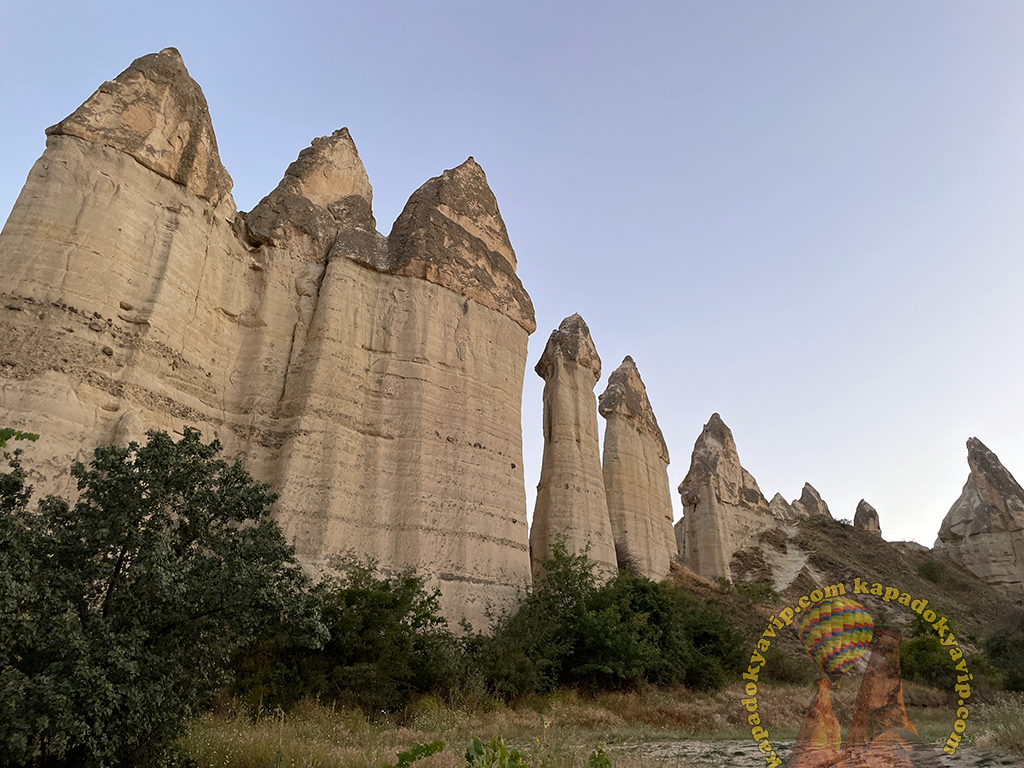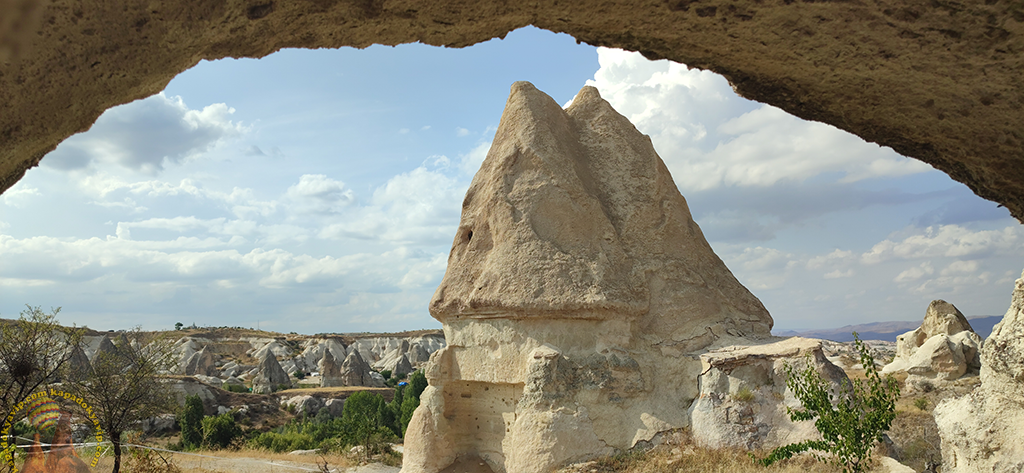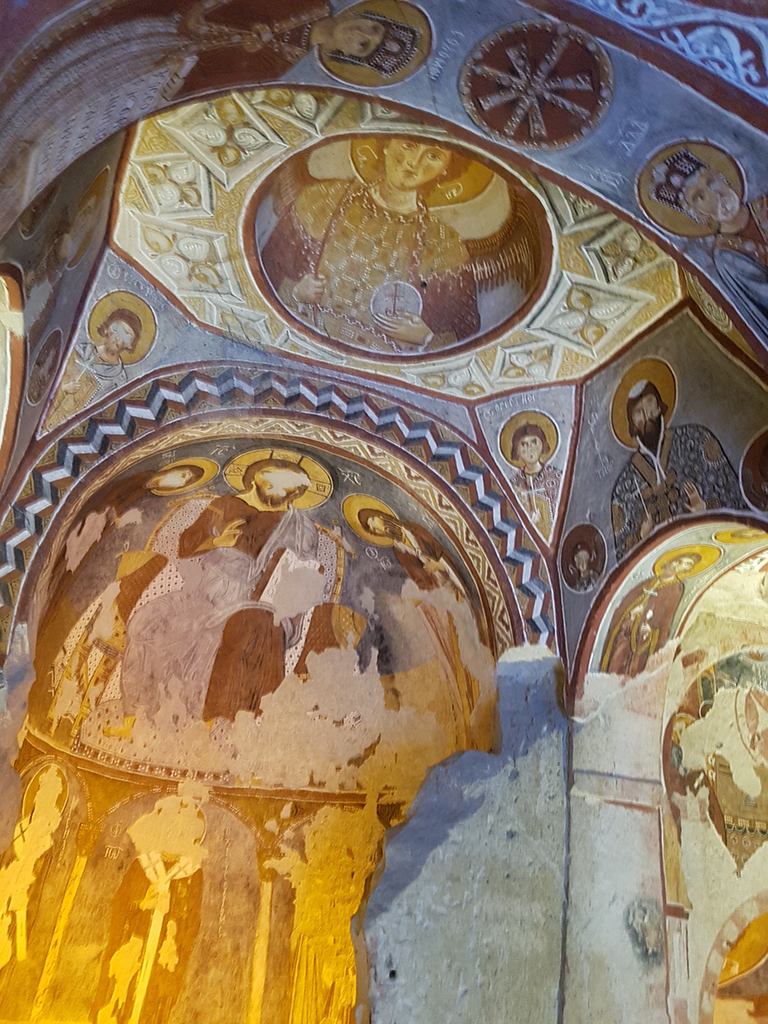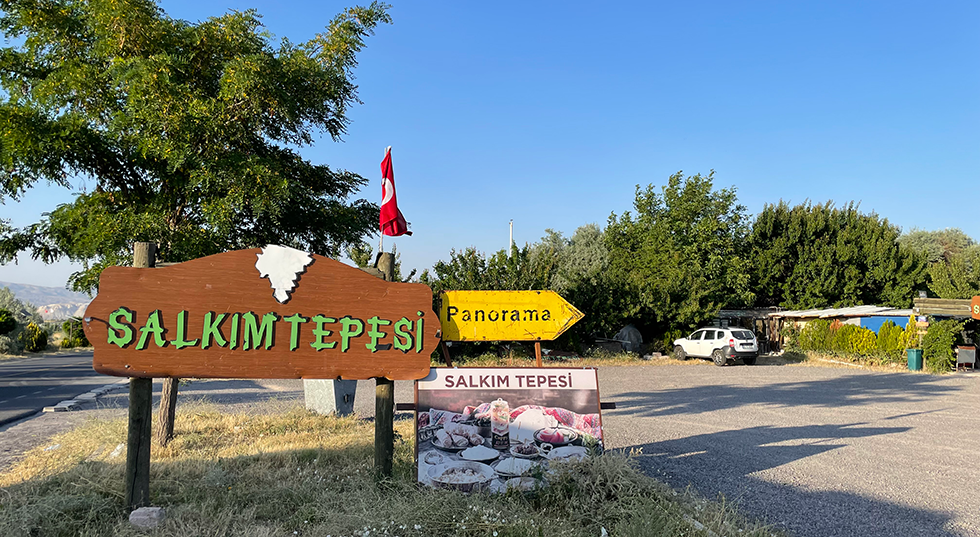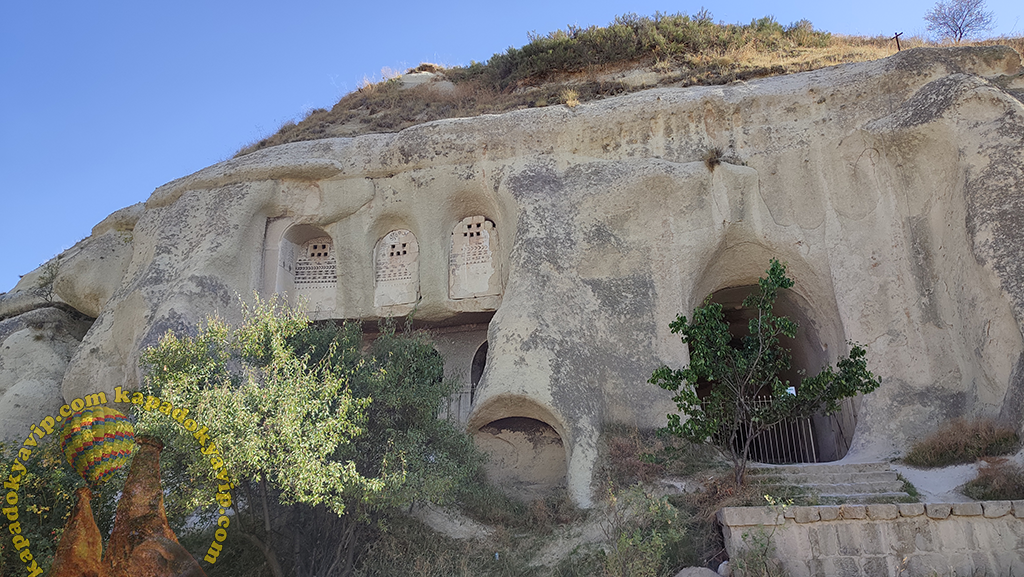
The Göreme region was included in the UNESCO World Heritage List in 1985 due to its historical festival. In this extraordinary region, there is the Gulludere valley, and one of its entrances is located in the Göreme region. It has a landscape that varies according to the season and weather conditions. Each season welcomes visitors with different beauties. The sunset in this valley is particularly spectacular. The reflection of lights on the fairy chimneys during sunset creates a magnificent scene. Travelers visiting the valley often sit on the rocks to enjoy the breathtaking view.
Another feature that makes the valley special is the presence of churches and monasteries from different periods. Also, there are places where people could dwell. Göreme Gulludere valley is rich not only in natural beauty but also in ancient structures. Many churches in the valley have unique features and beauties. Therefore, those who come here must explore the churches and monasteries inside. As in the entire Cappadocia region, volcanic formations have served as places of residence for people here.
Göreme Gulludere valley is spread over an area of approximately 4 km, making it one of the most popular trekking areas. With its length and unique nature, it is suitable for outdoor activities. Especially in spring, the landscape becomes perfect with green surroundings, colorful flowers, apricot, and almond trees. Like in other valleys, pigeon houses are also found here.
Located on the slopes of Bozdağ, Gulludere valley allows visitors to witness the grandeur of the mountain and also provides a view of the nearby Red valley (Kızılçukur). Its unique and perfect scenery has always been the focal point for visitors. The fairy chimneys in the region present a magnificent view as if touched by the hands of fairies.
Göreme valley is an extremely rich region in terms of historical traces. It is possible to witness deep historical imprints along with structures that have survived to the present day. Within the valley, there are a total of 5 churches. The valley is divided into two branches, with the first branch being named Güllüdere 1, and the second branch being named Güllüdere 2. The monks, famous for their endless seclusions, lived in the first branch. During walks, one can come across numerous cells of the monks. After entering the valley, about a 10-minute walk leads to the Yovakim – Anna Church. Following this church, the Direkli Church is observed. Subsequently, the second branch is encountered, where the Ayvalı, Haçlı, and Üç Haçlı churches are located. The churches within the valley must be explored and observed.
The church is reached by passing through vineyards and apricot trees. The church takes its name from the carved three-cross motif on its ceiling. Due to the cross motifs and the frescoes that have resisted the effects of time and survived until today, this church is among the must-see churches.
Although the construction of the church is dated back to the 7th century, the creation of the frescoes inside is thought to be from the 10th century. Historians mention that during those times, Christians used it as a refuge to protect themselves from Muslim and Arab invasions.
The most direct route to reach this church is to proceed along the dirt road through Çavuşin village. This road quickly leads individuals to Güllüdere 2 valley after 1 km, and the church is reached after a 15-minute walk. Due to being a very short route, it is recommended for those visiting the church to use this road.
The church has significant features. It consists of two chapels carved from rock and connected by a passage. These chapels were used as tombs in the north. Over time, this area continued to be used as a pigeon house. The frescoes surrounding the arches of the entrances have managed to survive until today. These frescoes possess remarkable features and are worth seeing.
The church, organized as a complex, has small chapels on both sides, leading to its consideration as a monastery. It is believed that the chapel on the left was used as a cemetery.
Göreme Güllüdere Valley is situated to the left. The valley basin is on a narrow slope and is believed to date back to the 6th and 7th centuries. A single apse was later added to the church. The nave is in a rectangular structure, and on the flat ceiling of the church, there are large and truly magnificent reliefs. Palm motifs can be seen here, and the cross symbols are must-see symbols. The frescoes on the apse have also managed to be preserved until today. The Haçlı church should be visited, if only for these frescoes. It has distinctive features and remarkable frescoes. The historical textures that have been preserved until today are of great importance. Visitors to the region should not miss seeing them.
Where is Gulludere Map
Gulludere ValleyGöreme Gulludere Valley does not have an entrance fee. While entering the valley is free of charge, there are separate fees for visiting the churches within the valley, albeit nominal. To explore the structures within the valley, which boasts a magnificent view and historical buildings, it may be necessary to pay a fee. The Güllüdere Valley is home to many churches, and there is no entrance fee specifically for the Güllüdere Valley itself.
Göreme Güllüdere Valley offers excellent opportunities for campers as well. The valley is rich in camping areas, making it an attractive destination for camping enthusiasts. The region features extensive hiking trails, allowing individuals to engage in tent camping and caravan camping in this beautiful environment. During the summer and spring months, it is possible to experience unforgettable camping adventures in a lush green setting amidst apricot trees.

